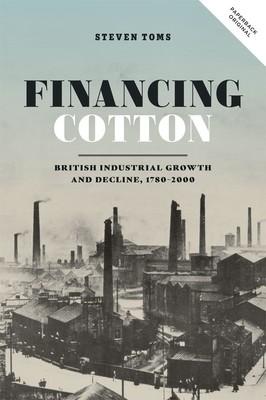
- We will send in 10–14 business days.
- Author: Steven Toms
- Publisher: Boydell Press
- ISBN-10: 178327509X
- ISBN-13: 9781783275090
- Format: 15.6 x 23.4 x 1.8 cm, softcover
- Language: English
- SAVE -10% with code: EXTRA
Reviews
Description
This book links the world of finance directly to the fate of the cotton and textile industry, long a metaphor for the rise and fall of Britain as a manufacturing economy, for the first time.
The cotton and textile industry, at the centre of the industrial revolution, has long been a metaphor for the rise and fall of Britain as a manufacturing economy. This book links the world of finance directly to the fate of the cotton and textile industry for the first time. Using a unique underlying data-set drawn from financial business records of over 100 cotton and textile-manufacturing firms based in Lancashire, and ranging from the late eighteenth to the twenty-first century, Financing Cotton analyses the dynamics of industrial capitalism by uncovering the interaction between financial systems and technological development and innovation. It offers new perspectives on business practices and their evolution, as well as decisions taken by entrepreneurs, managers and employees. The book broadly investigates five questions: how and why were individual firms profitable and what happened to these profits; how did the firms' financial structure and performance influence their attitudes to employment regulation; what were the effects of financial networks and institutions on the characteristics of the first and second phase of industrialisation; how did the financial system enable or stifle entrepreneurship and investment in new technology and, finally, why did consolidation and industrial restructuring offer survival options for some firms, but not for others?EXTRA 10 % discount with code: EXTRA
The promotion ends in 17d.15:01:43
The discount code is valid when purchasing from 10 €. Discounts do not stack.
- Author: Steven Toms
- Publisher: Boydell Press
- ISBN-10: 178327509X
- ISBN-13: 9781783275090
- Format: 15.6 x 23.4 x 1.8 cm, softcover
- Language: English English
This book links the world of finance directly to the fate of the cotton and textile industry, long a metaphor for the rise and fall of Britain as a manufacturing economy, for the first time.
The cotton and textile industry, at the centre of the industrial revolution, has long been a metaphor for the rise and fall of Britain as a manufacturing economy. This book links the world of finance directly to the fate of the cotton and textile industry for the first time. Using a unique underlying data-set drawn from financial business records of over 100 cotton and textile-manufacturing firms based in Lancashire, and ranging from the late eighteenth to the twenty-first century, Financing Cotton analyses the dynamics of industrial capitalism by uncovering the interaction between financial systems and technological development and innovation. It offers new perspectives on business practices and their evolution, as well as decisions taken by entrepreneurs, managers and employees. The book broadly investigates five questions: how and why were individual firms profitable and what happened to these profits; how did the firms' financial structure and performance influence their attitudes to employment regulation; what were the effects of financial networks and institutions on the characteristics of the first and second phase of industrialisation; how did the financial system enable or stifle entrepreneurship and investment in new technology and, finally, why did consolidation and industrial restructuring offer survival options for some firms, but not for others?

Reviews